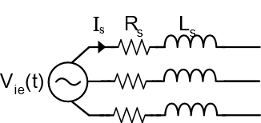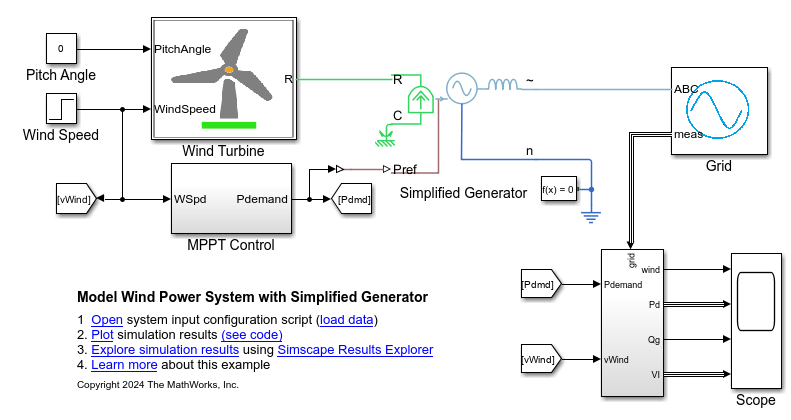Simplified Generator
Libraries:
Simscape /
Electrical /
Electromechanical
Description
The Simplified Generator block implements a behavioral model of an electromechanical generator. Use the Pref port to specify the reference power. The block supplies the reference power to the mechanical network and supplies the electrical power required to satisfy the mechanical power demand and account tor losses. This figure shows the circuit configuration of the block. The block acts as a constant voltage source with a series source impedance.

Vie is the supply voltage.
IS is the series source current.
RS is the series source resistance.
LS is the series source inductance.
The Simplified Generator block operates in both grid-connected and islanded mode. In grid-connected mode, the mechanical power tracks the reference power and the electrical power you need to supply to the grid to account for losses. The active power flow depends on the ratio of the series connected reactance to resistance for the entire electrical network. To achieve the expected behavior, you need to tune the Active power frequency droop and Droop filter time constant parameters as well as the block impedance. To choose how to specify the block the impedance, set the Source impedance parameter to one of these options:
X/R Ratio— Specify the ratio of the series connected reactance to resistance.Series RL— Specify the resistance and inductance.
During islanded mode, the block acts like a constant voltage AC supply because maintaining frequency takes priority over the mechanical power tracking the power reference.
Variables
To set the priority and initial target values for the block variables before simulation, use the Initial Targets section in the block dialog box or Property Inspector. For more information, see Set Priority and Initial Target for Block Variables.
Use nominal values to specify the expected magnitude of a variable in a model. Using system scaling based on nominal values increases the simulation robustness. Nominal values can come from different sources. One of these sources is the Nominal Values section in the block dialog box or Property Inspector. For more information, see System Scaling by Nominal Values.
Assumptions and Limitations
This block requires an electrical network with a high ratio of series connected reactance to resistance.
Examples
Ports
Input
Conserving
Parameters
Extended Capabilities
Version History
Introduced in R2024a

